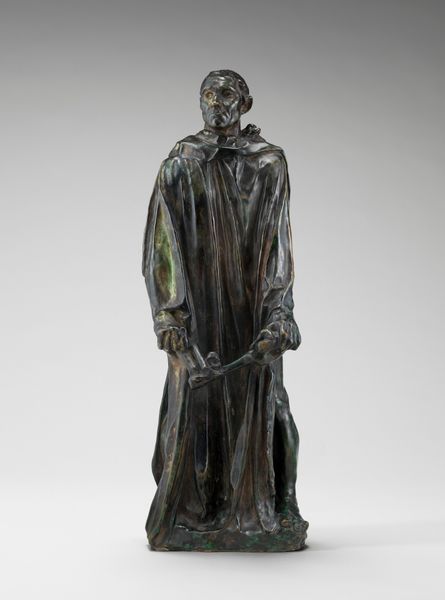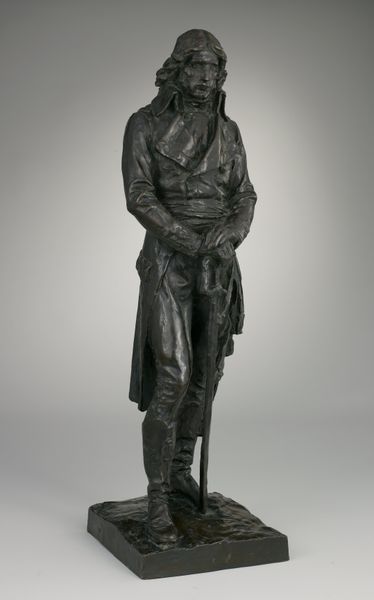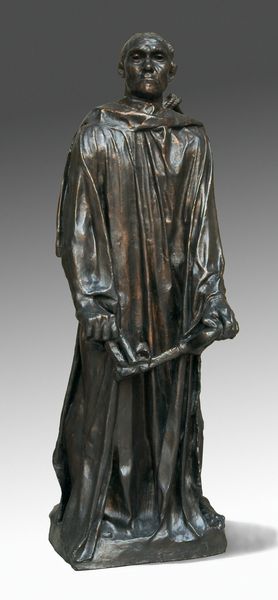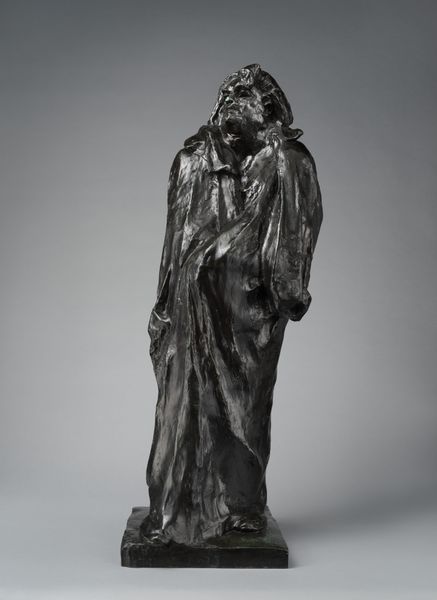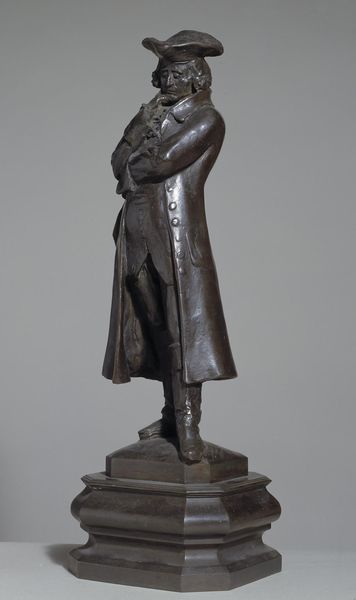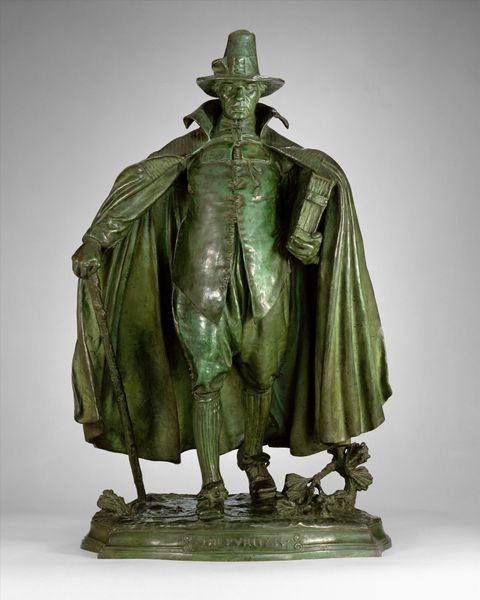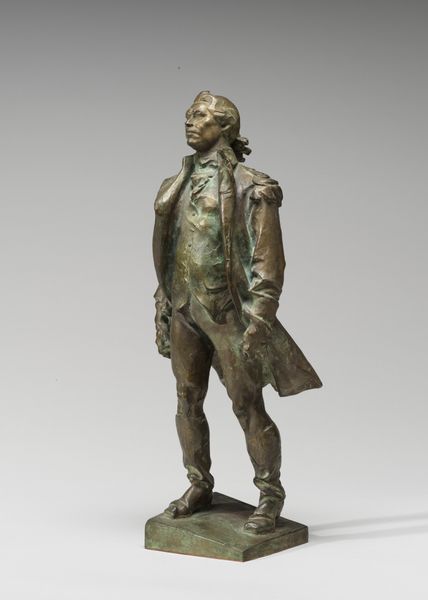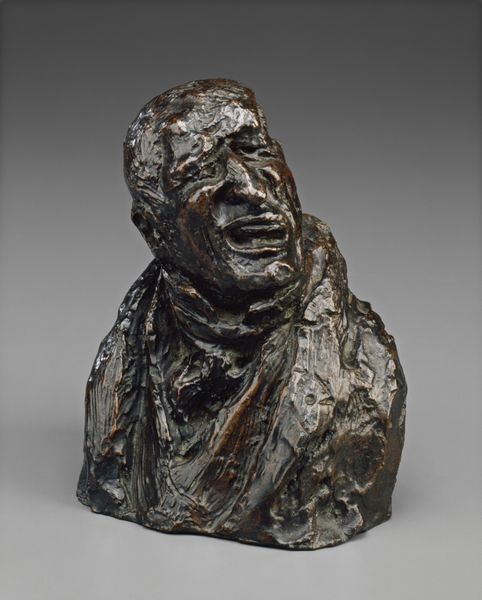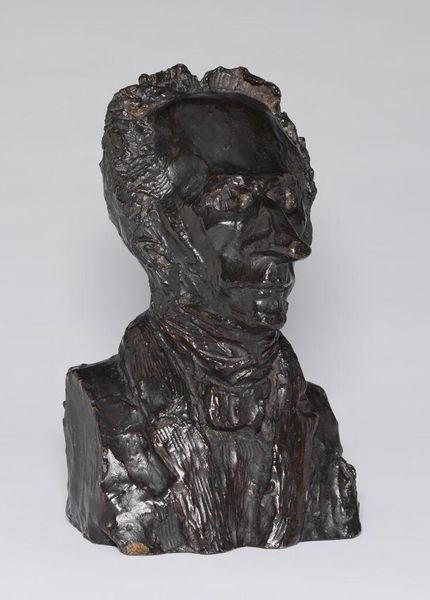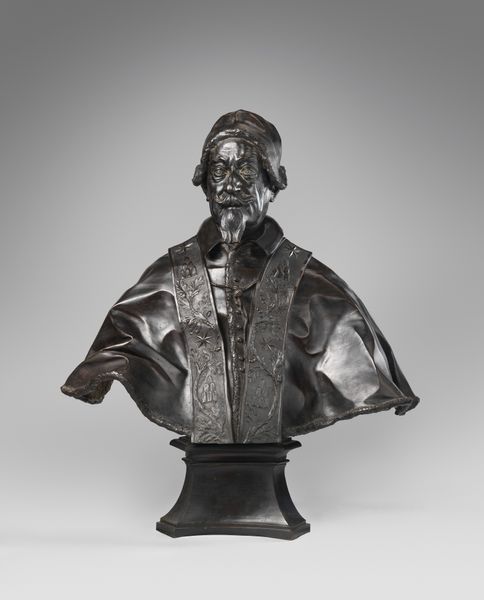
bronze, sculpture
#
portrait
#
stone
#
sculpture
#
bronze
#
sculpting
#
sculpture
#
united-states
#
history-painting
#
realism
Copyright: No Copyright - United States
Curator: Let's take a look at William Ordway Partridge's "General Grant as President," a bronze sculpture created around 1900, now residing here at the Minneapolis Institute of Art. Editor: My first impression is… somber. He looks weighed down, burdened almost, despite the apparent formality of the piece. The folds of his coat and the hat obscure rather than reveal, don't you think? Curator: That's interesting, considering its intent. Partridge crafted this bronze using traditional methods, likely involving the lost-wax casting process, meticulously building up layers of wax to achieve this remarkable likeness. Bronze as a material, then as now, signifies permanence, honor, and, importantly, affordability in replicating monumental works of art. Editor: The very act of monumentalizing Grant also highlights the era's conflicted memory of Reconstruction. While heralded as a war hero, his presidency was mired in scandal and ultimately failed to protect the rights of newly freed African Americans. This statue, while seemingly celebrating power, unintentionally prompts deeper questions about its cost. I wonder how that factored into the creation and reception of Partridge's work at the time. Curator: Well, Partridge clearly wanted to capture Grant's gravitas. The production of such realistic pieces would've also been driven by both artistic ambitions, the financial benefits of being commissioned, and an appeal to wealthy patrons, as was standard at the turn of the century. Editor: Precisely! Who commissioned this? What were their intentions in immortalizing Grant in this way, especially in light of the complex legacy that his life and administration embodied? I think a nuanced consideration of Grant's actual presidential record, compared against this heroic image is critical to truly assess this sculpture. Curator: From my viewpoint, examining the physicality of the statue highlights the intersection of artistry and industry. It is critical to know where the metal was sourced from, who was involved in the casting, and who bought such bronzes for their private and public collections. These material facts and histories shed light on the making and distribution of the work. Editor: Absolutely, seeing the work within the history of the Gilded Age brings it to life, not only the art itself, but what it can teach us about the era's hopes and struggles, and how they intersect. Curator: Exactly, it reveals how a traditional approach and historical subject opens questions of both the social and material world of late 19th and early 20th century America.
Comments
No comments
Be the first to comment and join the conversation on the ultimate creative platform.
